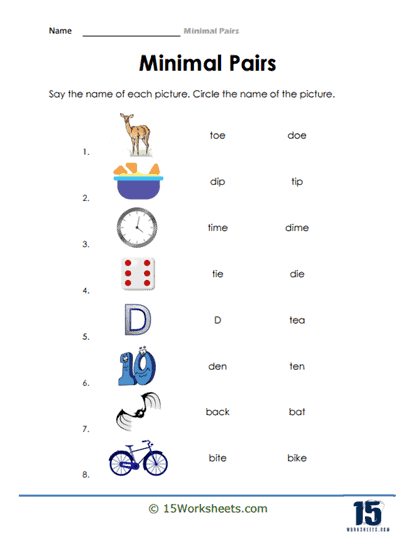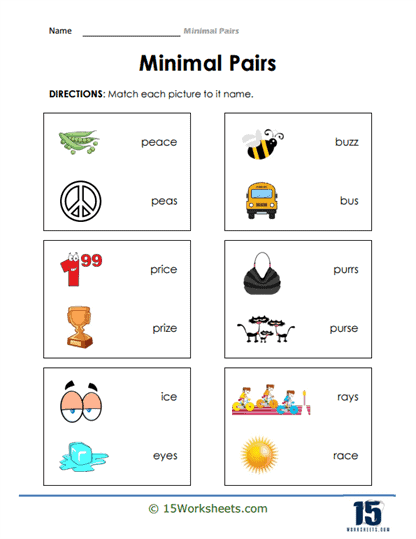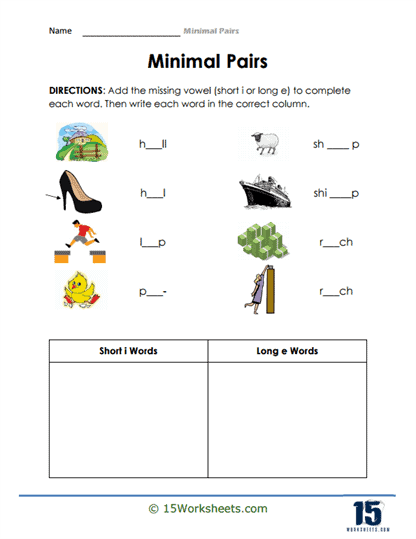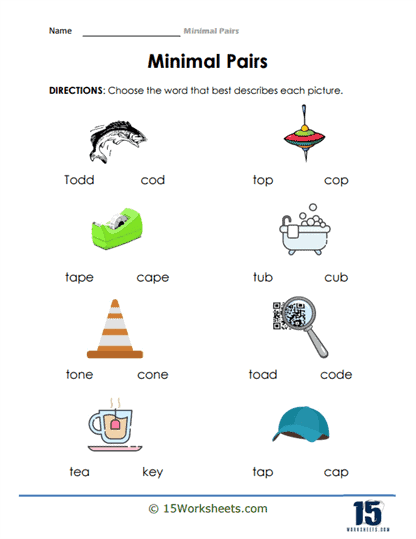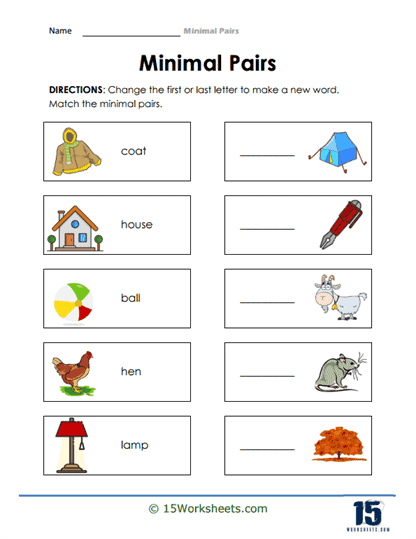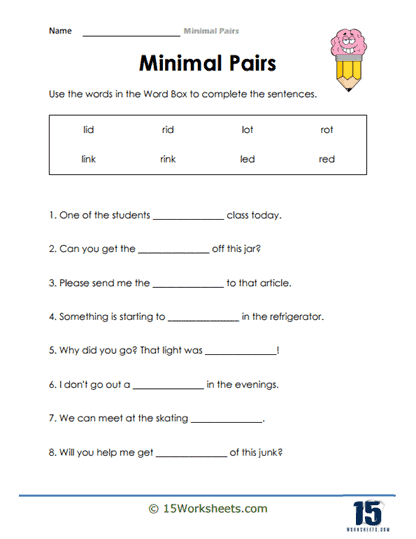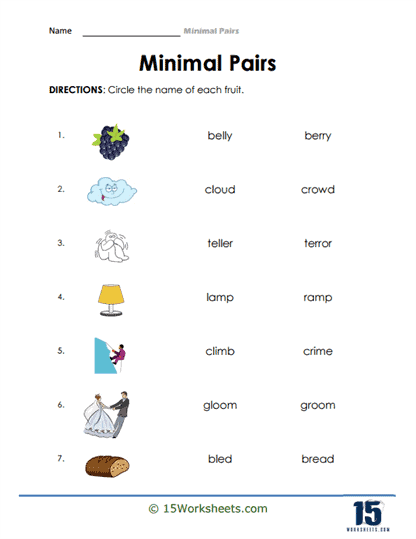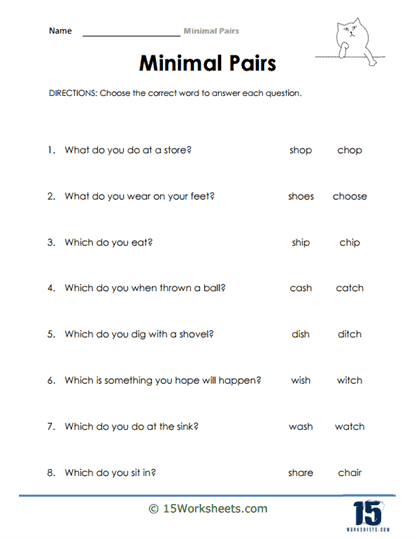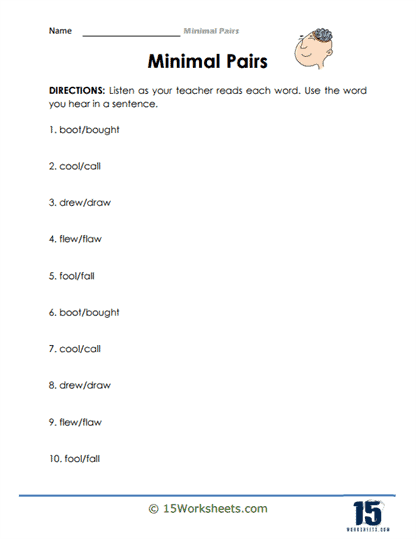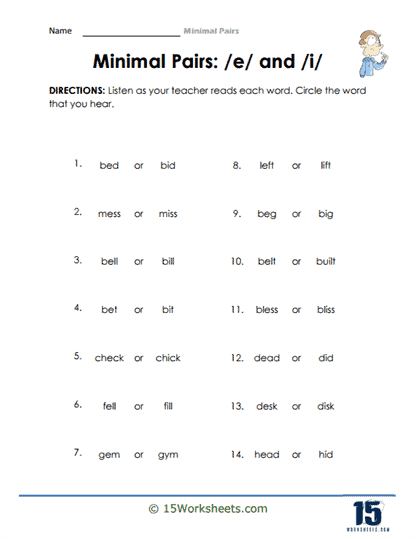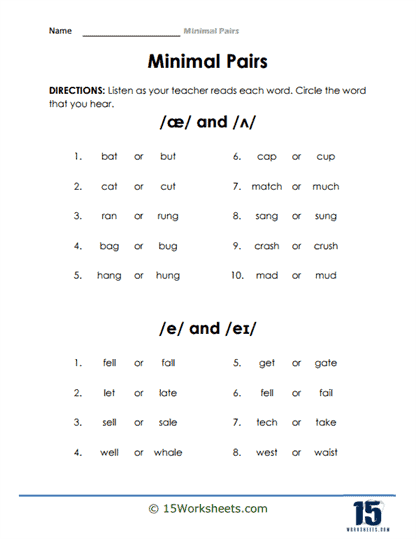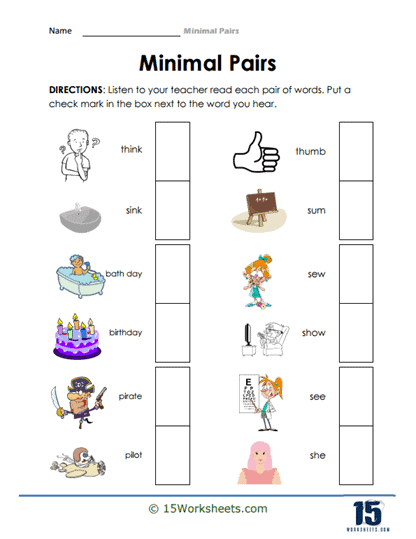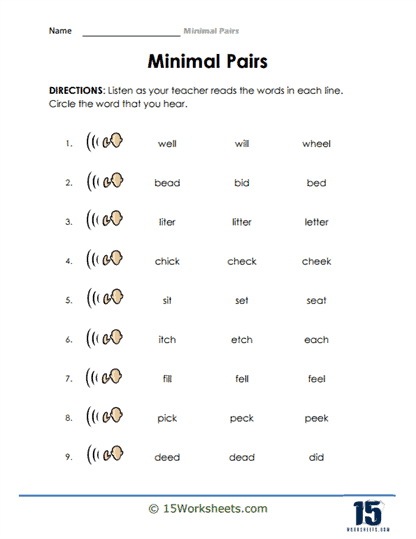Minimal Pairs Worksheets
All About These 15 Worksheets
Phonological awareness is a foundational skill in language development and effective communication. Among its aspects, the ability to recognize and distinguish minimal pairs plays a critical role. Minimal pairs are pairs of words that differ by only one sound, such as “ship” and “sheep.”
Understanding minimal pairs is vital for students as it refines their listening and pronunciation skills, fosters phonemic awareness, and enhances overall language proficiency. To support students in mastering this essential skill, we present a collection of Minimal Pairs worksheets. This collection is carefully designed to provide students with structured and engaging opportunities to practice and refine their ability to discern subtle sound differences.
What are Minimal Pairs Worksheets?
Minimal Pairs Worksheets are educational resources designed to help students practice and learn about minimal pairs, which are pairs of words that differ in only one sound or phoneme. Minimal pairs are useful in phonics instruction because they can help students develop their phonemic awareness and improve their ability to distinguish between similar sounds in words.
These worksheets often include various activities, such as matching, sorting, or writing exercises, that focus on identifying and distinguishing between the minimal pairs. For example, a worksheet might include two columns of words, each column containing words that differ by only one sound. The student would be asked to circle the word in each pair that has the different sound.
What Are Minimal Pairs?
Minimal pairs in phonics are pairs of words that have only one phoneme (sound) difference, while the other sounds in the words remain the same. The concept of minimal pairs is used in phonetics and phonology to demonstrate how a single sound change can alter the meaning of a word. In phonics instruction, minimal pairs are helpful for teaching children to recognize and distinguish between similar sounds, thus developing their phonemic awareness and listening skills.
Here are some examples of minimal pairs in English:
“bat” (/bæt/) and “cat” (/kæt/) – The initial sounds /b/ and /k/ are different, while the middle and final sounds are the same.
“bit” (/bɪt/) and “bet” (/bɛt/) – The middle vowel sounds /ɪ/ and /ɛ/ are different, while the initial and final sounds are the same.
“cap” (/kæp/) and “cab” (/kæb/) – The final sounds /p/ and /b/ are different, while the initial and middle sounds are the same.
“seat” (/siːt/) and “sit” (/sɪt/) – The middle vowel sounds /iː/ and /ɪ/ are different, while the initial and final sounds are the same.
Using minimal pairs in phonics instruction can help learners:
Develop their listening skills and phonemic awareness by recognizing subtle differences in sounds.
Improve their pronunciation and articulation, as they learn to produce the distinct sounds in each minimal pair.
Enhance their spelling skills by understanding how changing one sound can result in a different word with a different meaning.
Minimal pair activities, such as listening games, matching exercises, or minimal pair drills, can be used to help students practice differentiating between similar sounds and improve their overall phonics skills.
The Importance of Minimal Pairs
Recognizing and distinguishing minimal pairs is of paramount importance for several reasons:
- Listening and Pronunciation Skills: Proficiency in minimal pairs sharpens students’ listening skills, making them more attentive listeners and effective communicators. It also enhances their pronunciation accuracy as they learn to articulate sounds more precisely.
- Phonemic Awareness: Working with minimal pairs develops students’ phonemic awareness, which is the ability to identify and manipulate individual phonemes (speech sounds). This skill is foundational for literacy development, reading, and spelling.
- Vocabulary Expansion: Exploring minimal pairs exposes students to a broader range of vocabulary. They learn to differentiate between words with subtle sound distinctions, expanding their language repertoire.
- Effective Communication: The ability to discern minimal sound differences is crucial for understanding and conveying meaning in spoken language. This skill is invaluable in both academic and real-world contexts.
This collection of Minimal Pairs worksheets is a valuable resource for educators and parents committed to supporting their students’ phonological awareness and language development. Proficiency in recognizing minimal pairs is not just an academic exercise; it’s a fundamental skill that enhances listening, pronunciation, phonemic awareness, vocabulary, and communication.
By using these engaging worksheets, students will strengthen their ability to distinguish subtle sound differences, ultimately improving their overall language proficiency. This collection is an investment in their future success, ensuring they have a solid foundation in phonological awareness and language skills. Watch your students excel in their journey toward becoming skilled and confident communicators.

